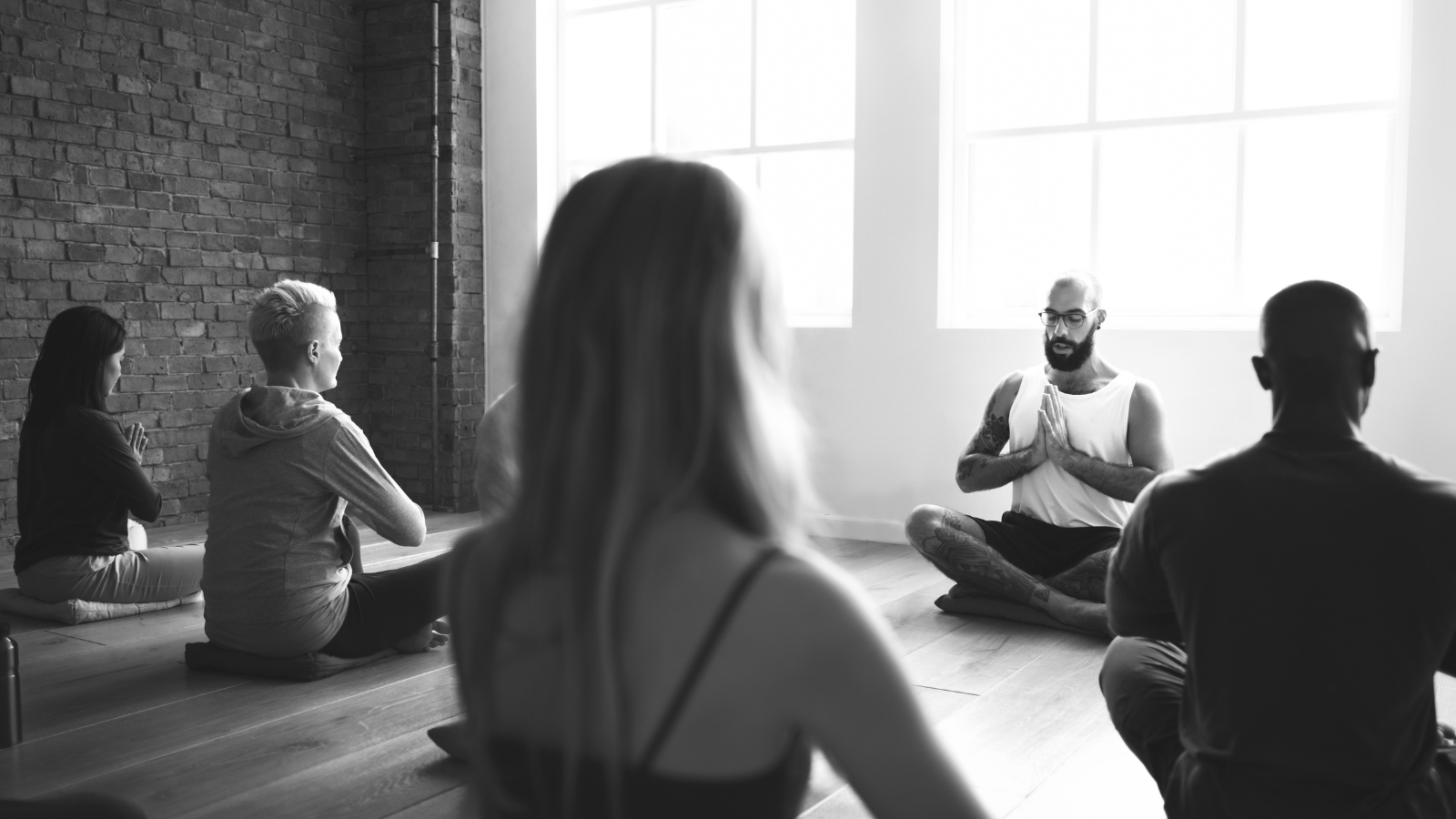Introduce Yoga Philosophy into Your Classes

Article At A Glance
Introducing the yoga sutra into a yoga practice can be challenging and even intimidating. Some of the frequent statements I hear are “I’m not qualified to teach yoga philosophy,” “no one is interested in yoga philosophy, or it’s too “out there,” and “I feel like I’m preaching and it’s uncomfortable.” Teaching yoga philosophy as part of your class doesn’t have to be complicated. Here are a few tips for incorporating yoga philosophy into your yoga classes.
You’re Teaching Philosophy—You Just Don’t Know It
If you are teaching yoga poses, you are already teaching yoga philosophy. When students come to the mat, and you have them slow down, feel their body, notice their breath, and check in with how they are feeling, you are teaching them Svadhyaya (self-study). When you are teaching a vigorous practice and see that students are tired but have the will to keep going, you are teaching Tapas (discipline). When you ask students to try and let go of the results, you teach them Abhyasa and Vairagya. You are still teaching embodied yoga philosophy even if you aren’t using Sanskrit or stating the Yoga Sutras.
How to Choose Which Part of Yoga Philosophy to Teach

Choosing which Yoga Sutra to teach can be difficult. You want to choose something that resonates with your students. But more importantly, you want to choose something that resonates with you. Why? Because you need to be able to deliver a piece of information you believe in and understand. Otherwise, the philosophy may come across as preaching or disconnected.
Sit with your sutra book and see what already resonates with you and your teaching. When you analyze how you teach or what you are conveying through your cues, you may realize that there is a sutra that directly correlates with what you are already teaching. Now you can express an additional layer of yoga studies to your students in an authentic way that resonates with you and will resonate with your students.
How to Present Your Yoga Philosophy

There are many methods for delivering your yoga philosophy. You can keep it simple and read the yoga sutra at the beginning and end of your practice and perhaps mention it once or twice throughout the practice. This way, you get more comfortable presenting this information to your students. Then you can expand on the yoga sutra and give an everyday example.
For example, if you teach yoga sutra 2.33, “When negative thoughts disturb your mind, cultivate the opposite thoughts,” you can provide a real-life example. When thoughts of self-doubt enter your practice while you are practicing a challenging pose, notice what it would be like to shift that thought process. Think of what you can do, or instill thoughts of self-empowerment while practicing the challenging pose. Another option is to speak through the body. You can teach students about Ahimsa (non-harming) and cue how to honor their bodies throughout the practice.
Teaching yoga philosophy can seem uncomfortable at first. Still, the more you study it and see how you are already applying it in your life, you will find the courage to share a part of yourself and your teaching that will uplift and encourage your students.
Also, read...
Warrior I Pose: 5 Strengthening Variations
4 Easy Ways to Use a Sandbag in Yoga Practice
Exercise and Longevity: Diversify Your Yoga Practice for Maximum Benefits
Related courses
Breath as Medicine: Yogic Breathing for Vital Aging
Yoga and Myofascial Release: Releasing Chronic Tension with the Bodymind Ballwork Method

Allison Ray Jeraci, E-RYT 500, RPYT, is a vinyasa-based yoga teacher fascinated by the intricate relationship between the mind and body. She offers a range of alignment-focused classes touching on anatomy, philosophy, and creative propping with a mindful approach. In addition to teaching group classes and managing the Yoga Culture studio in Danbury, CT, she also teaches at Open Door Family Medical Center in Westchester, NY, empowering mothers-to-be with prenatal yoga classes and childbirth education. You can find her @allisonschleck on Instagram and www.allisonrayjeraci.com.



